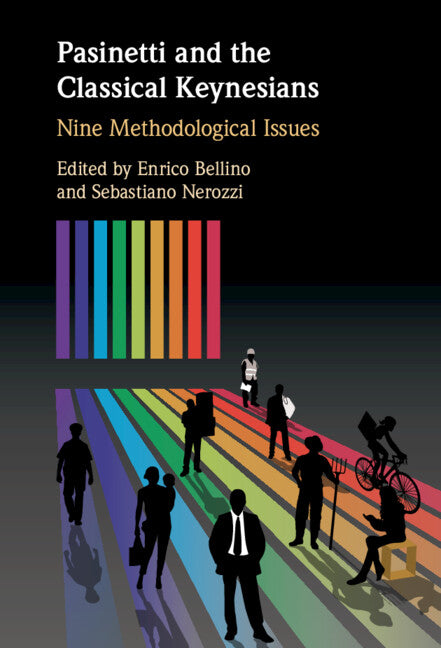Freshly Printed - allow 6 days lead
Couldn't load pickup availability
Pasinetti and the Classical Keynesians
Nine Methodological Issues
Nine leading scholars discuss the nine main ideas that, according to Luigi Pasinetti, characterize the Classical-Keynesian approach.
Enrico Bellino (Edited by), Sebastiano Nerozzi (Edited by)
9781108831116, Cambridge University Press
Hardback, published 24 February 2022
250 pages, 2 b/w illus.
23.5 x 15.8 x 2.5 cm, 0.64 kg
'In a very long and extremely productive career, Luigi Pasinetti has made some major contributions to heterodox economic theory from a classical-Keynesian perspective. His methodological claims, however, have received less critical attention. In this original and stimulating volume fifteen scholars explore the important methodological issues raised by Pasinetti, including questions of realism, rigour, ergodicity, causation, disequilibrium and the supposed microfoundations of macroeconomics. Essential reading!' John E. King, La Trobe University
Recent economic and financial crises have exposed mainstream economics to severe criticism, bringing present research and teaching styles into question. Building on a solid and vivid tradition of economic thought, this book challenges conventional thinking in the field of economics. The authors turn to the work of Luigi Pasinetti, who proposed a list of nine methodological and theoretical ideas that characterize the Classical Keynesian School. Drawing inspiration from both Keynes and Sraffa, this school has forged a long-standing and ambitious research programme often advocated as a competing paradigm to mainstream economics. Overall, the Classical Keynesian School provides a comprehensive analytical framework into which most non-mainstream schools of thought can be integrated. In this collection, a group of leading scholars critically assess the nine main ideas that, in Pasinetti's view, characterize the Classical-Keynesian approach, evaluating their relevance for both the history of economics and for present economic research.
Foreword Mauro Baranzini, Alberto Quadrio Curzio and Roberto Scazzieri
Introduction Enrico Bellino, Sebastiano Nerozzi
1. Reality (and not simply Abstract Rationality) as the Starting Point of Economic Theory Maria Cristina Marcuzzo
2. Economic Logic with Internal Consistency (and not only Formal Rigor): Beyond Formal Rigour: Realism and Internal Consistency in Piero Sraffa Neri Salvadori, Rodolfo Signorino
3. Malthus and the Classics (not Walras and the Marginalists) as the Major Inspiring Source in the History of Economic Thought: The Principle of Effective Demand and Classical Economics Heinz D. Kurz
4. Non-ergodic (in Place of Stationary, Timeless) Economic Systems: Considerations Suggested by Joan Robinson's Distinction between Two 'Notions' of Time in Economic Theory Ariel Dvoskin, Paolo Trabucchi
5. Causality vs. Interdependence: A Distinction that Conveys a World's View Enrico Bellino, Sebastiano Nerozzi
6. Macroeconomics before Microeconomics: A Sceptic's Guide to Macroeconomics Murray Milgate, John Eatwell
7. Disequilibrium: Disequilibrium and Instability (Not Equilibrium) as the Normal State of the Industrial Economies: A Methodological Standpoint on Structural Economic Dynamics Ariel Luis Wirkierman
8. Necessity of Finding an Appropriate Analytical Framework for Dealing with Technical Change and Economic Growth: Technical Change, Structural Dynamics and Employment Harald Hagemann
9. A Strong, Deeply Felt, Social Concern Claudia Rotondi
Afterword: Why the Classic-Keynesian Trend May Be of Interest to a Young Scholar Today? Nadia Garbellini
Concluding Remarks: Pasinetti's Separation Theorem Bertram Schefold
Author Index
Subject Index.
Subject Areas: Economic history [KCZ], Political economy [KCP], Economic growth [KCG], Economic theory & philosophy [KCA]


